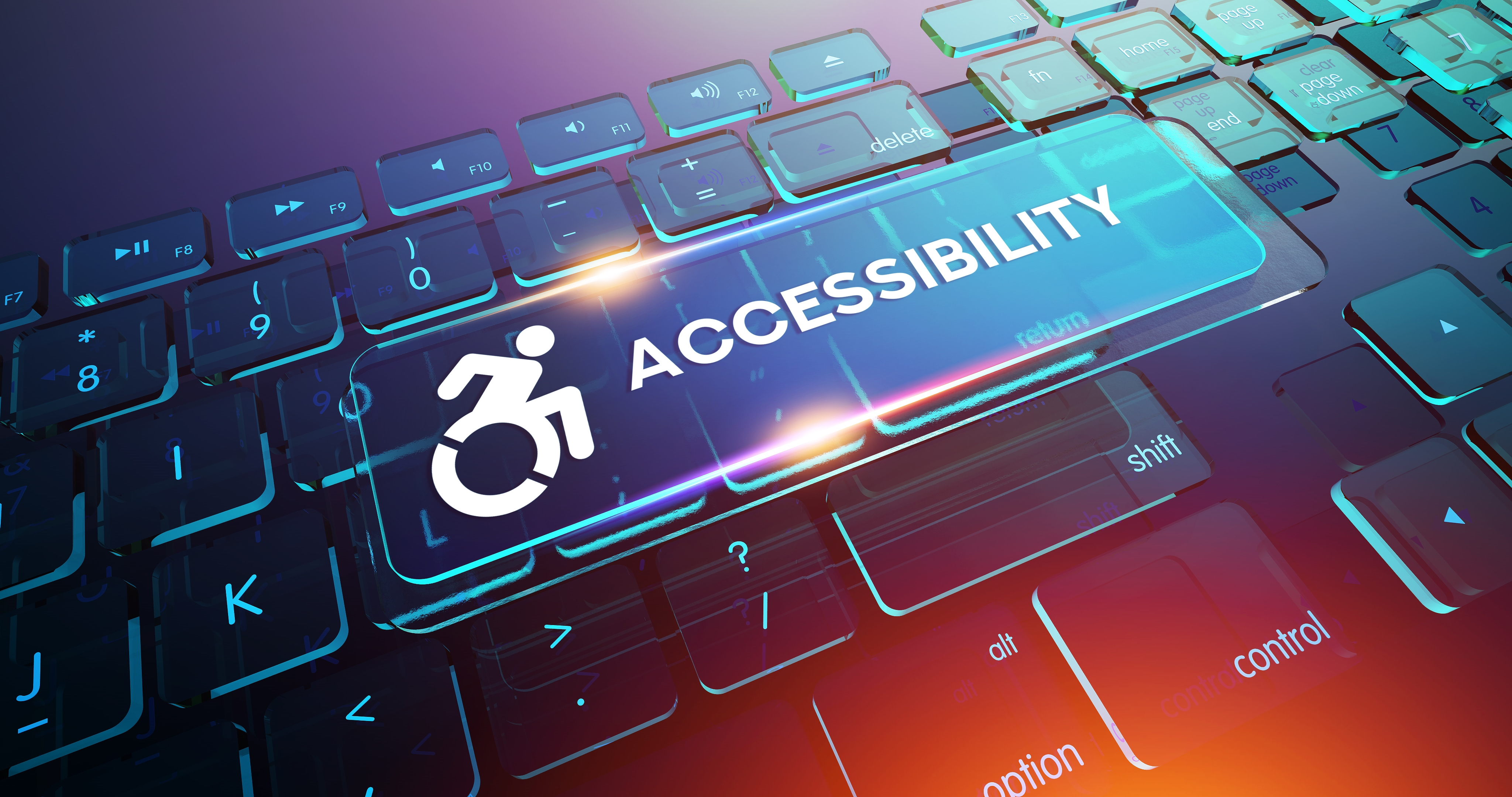Is the content on your website accessible for all visitors? An accessible website allows differently abled people, with or without disabilities, to have the same or similar experience. Accessible features offer a better and inclusive experience for all users.
Website accessibility ensures that people with disabilities can perceive, understand, navigate, and interact with all the content on your website.
By making web accessibility a priority you show visitors that you care about their experience and are committed to inclusivity. It’s also required by law through the Americans with Disabilities Act Standards for Accessible Design.
If inclusivity and law isn’t enough, consider the number of website visitors inaccessible content could impact. What if one in six people were unable to access content on your website? According to the World Health Organization, 16% of the world’s population (or one in six of us) live with a disability. This can include physical, behavioral, developmental and sensory disabilities.
Remove Accessibility Barriers
Because designing an accessible website improves the user experience, it also helps you reach a broader audience and improves your SEO. Equal access to online content is beneficial for all. Below, we’ll share four ways you can increase accessibility on your site.
Keyboard Accessibility
First, one of the easiest ways to test for accessibility is to try navigating the website without a mouse. Can you tab through from start to finish or do you get stuck at some point? The reason for this test is because many assistive technologies rely on keyboard-only navigation. Be sure all links and controls can be accessed using the tab key.
Structure and Organize with Headers
By using headings in the correct order, the website delivers content in logical order not just for screen readers, but for search engines too.
- Don’t use <h1> for anything other than the title of the page.
- Don’t skip heading levels, for example <h1> to <h4> because screen readers can interpret this as missing content.
Alt Text for Images
Alt text is not just for website optimization, it’s vital for screen reader users to understand the content. Photos, images and graphics should have alt text with a short description, for example, “photo of a person picking an apple from a tree”
Did you know? If an image is linked, the screen reader will read the file name. Choose your file names wisely and be as descriptive as possible.
It’s also important to consider how screen readers read the alt text. If an abbreviation is used the screen reader will read it phonetically. For example, type out Centers for Disease Control instead of the CDC abbreviation to avoid confusion for the user.
Captions and Transcriptions
Including captions in multimedia is required for accessibility compliance and creates a better user experience for all. Studies have shown that captions assist in comprehension and memory, and helps viewers stay engaged with online videos.
There are two methods to caption videos:
- Closed captions are added within the digital platform and can be turned on or off.
- Open captions are coded into the video and can’t be turned off.
Providing captions and transcriptions is crucial for accessibility. A bonus to transcriptions is they are proven to increase your SEO. Search engines can’t watch or listen to a video, but they can index text-transcripts.
It’s not just a best practice – it’s a necessity
By implementing accessibility best practices you ensure the website is perceivable, operable, and understandable for all users, including those with disabilities. It not only broadens the audience you reach, but also mitigates the risk of legal challenges with ADA compliance. Other advantages of accessibility are increased website traffic, reduced page loading times, and a positive brand reputation.
The above just scratches the surface of the many best practices in making a website accessible. If you don’t know where to start and need assistance with website accessibility, Greenleaf Media is here to help! Send us an email at This email address is being protected from spambots. You need JavaScript enabled to view it. or call us at 608-240-9611.
